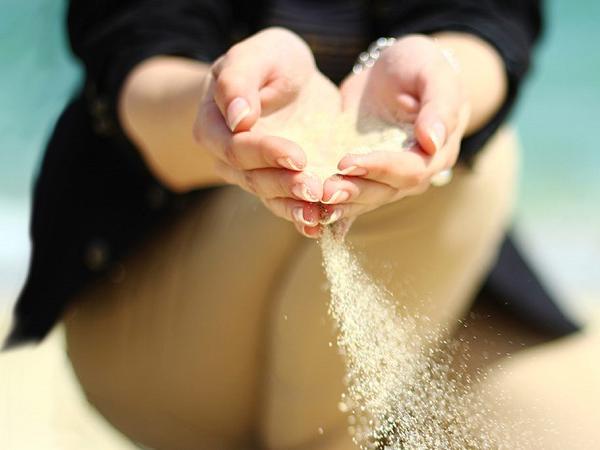
Date: 11 May 2020
Europe’s flat glass is characterized by its strong local roots: from raw materials to production, transformation, installation and end-of-life management, it provides economic activity and jobs across Europe. It is estimated that 90% of the raw material used to produce Europe’s flat glass originates from within Europe.
The flat glass industry has historically benefited from the availability of abundant high-quality silica sand in Europe, which is the greatest volume of raw material entering in the flat glass composition[1], and the sector is confident that it will continue benefiting from this sustainable supply in the future.
Why is high-quality sand supply critical to the flat glass sector?
Sand is critical to flat glass manufacturing since it is the principal source of silicon dioxide (SiO2) which is essential for producing glass[2]. A high proportion of silica in the sand composition (above 95%) is therefore required together with a high level of chemical purity.
This quality of raw materials is all the more important for flat glass manufacturing since it impacts key features of its final products; e.g. transparency, strength and durability of the glass. For instance, only products manufactured with high-quality materials can meet the optimal vision requirements for the automotive glass set in the United Nations regulation R43[3] or the light and thermal transmittance specifications for building glass, without compromising with durability and safety.
Which sand is used in glass manufacturing?
As stressed by the European Commission Best Available Techniques (BAT) Reference Document for the Manufacture of Glass[4], although sand is a common raw material most deposits are not of sufficient purity for glass making because of these very high-level requirements. The sand deposits required by the glass industry are generally fossil beach, river, lake or wind deposit due to their specific chemical and physical properties. The technical requirements for its extraction demand high levels of skills and competence on the part of the sand supplier.
By contrast, modern beach sand is not suitable for the glass industry because of the presence of salt (NACl) and shells (high carbonaceous fraction), and due to the thickness of its particles (> 550 µm). Sand that is extracted, often illegally, from rivers and sea shores and which is causing severe concerns outside Europe due its negative environmental and social impacts[5] is not used and could not be used to manufacture flat glass.
At a global level, it is estimated that industrial sand, meeting the chemical and physical requirements of the glass industry and of a few other industries, represents less than 1% of the 50 billion tonnes of sand extracted yearly.
An abundant resource sustainably extracted in Europe for flat glass production
Historically, the locations of flat glass plants in Europe were determined by the proximity of abundant high-quality raw materials. The closer the plant was to the raw material source, the lower the transport costs associated to the supply of sand.
Today, the European flat glass industry continues benefiting from reliable sourcing in the European Union. As highlighted in the last European Commission study on “the review of the list of critical raw materials” in the European Union (2017), silica sand used in flat glass manufacturing is one of the few raw materials produced in sufficient quantity to avoid “significant extra-European imports”.
Generally, in Europe all glass raw materials which are extracted from mineral workings are tightly regulated. Permission to extract sand is not given without strict requirements for restoration of the workings. Suitable end uses could include restoration to agricultural land, to forestry or to wildlife reserves, depending on the local situation.
Recycled glass as an alternative to sand use
Although the sourcing of high-quality sand is secured and its extraction in Europe is governed by a strict legislative framework to guarantee its sustainability, the flat glass industry will continue its efforts to reduce its use of virgin raw materials, including sand, to preserve our planet’s resources and reduce carbon emissions.
The use of recycled glass (i.e. cullet) as an alternative to sand as a source of silicon dioxide (SiO2) has proved to be an efficient way to reduce CO2 emissions from flat glass manufacturing and virgin sand consumption; i.e. one ton of recycled glass replaces 0.7 tons of virgin sand. Over the last decades, the European flat glass sector has increased the share of cullet in its batch from 20 to 26% to replace virgin raw material. It is estimated that in maximum and full recycling scenario, as presented in the sector’s 2050 vision, an improved collection of end-of-life building glass in Europe would increase this ratio to 37% and the sector is engaging with national actors and decision-makers to unlock some of this potential
The European flat glass producers are committed to use raw materials that comply with the highest levels of sustainability standards and to strive for their sustainable consumption. To contribute to the carbon neutrality objective in Europe, the flat glass sector will continue working on replacing virgin raw materials with recycled glass and, wherever possible, to have raw materials locally sourced for a reduction in transport emissions.
***
[1] In typical float glass compositions, the oxides of silicon, sodium, calcium and magnesium account for around 98 % of the glass (SiO2: 72.6 %, Na2O: 13.6 %, CaO: 8.6 %, and MgO: 4.1 %). The silicon dioxide is derived mainly from sand and glass cullet.
[2] Other sources of silica for flat glass melting include cullet (i.e. recycled flat glass) and ground quartzite.
[3] Regulation No 43 of the Economic Commission for Europe of the United Nations (UN/ECE) – Uniform provisions concerning the approval of safety glazing materials and their installation on vehicles – includes specific tests to avoid optical distortion (i.e. an optical defect in a windscreen that changes the appearance of an object viewed through the windscreen), secondary image (i.e. spurious or ghost image) or irregular light transmittance.
[4] European Commission, 2012, Reference Document for the Manufacture of Glass.
[5] UN report, 2019, “Sand and Sustainability”.
 600450
600450






















Add new comment